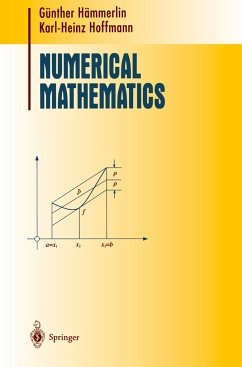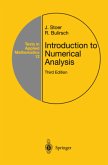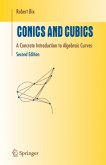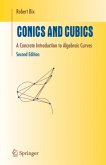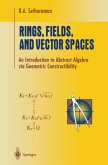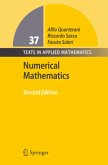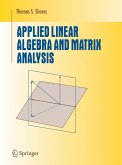This English translation of the highly successful German textbook Numerische Mathematik covers the usual classical topics of numerical analysis, and also includes an up-to-date treatment of both splines and linear optimization methods. The text is designed to be used in a first course in numerical analysis at the upper division undergraduate level or at the beginning graduate level. It features a careful balance between mathematical rigor and numerical insight and includes many worked out numerical examples. Each section concludes with an extensive set of exercises which instructors should find useful in helping students to master the material. Moreover, the authors have also provided carefully researched historical notes which will be of particular interest to experts as well as students.
"In truth, it is not knowledge, but learning, not possessing, but production, not being there, but travelling there, which provides the greatest pleasure. When I have completely understood something, then I turn away and move on into the dark; indeed, so curious is the insatiable man, that when he has completed one house, rather than living in it peacefully, he starts to build another. " Letter from C. F. Gauss to W. Bolyai on Sept. 2, 1808 This textbook adds a book devoted to applied mathematics to the series "Grundwissen Mathematik. " Our goals, like those of the other books in the series, are to explain connections and common viewpoints between various mathematical areas, to emphasize the motivation for studying certain prob lem areas, and to present the historical development of our subject. Our aim in this book is to discuss some of the central problems which arise in applications of mathematics, to develop constructive methods for the numerical solution of these problems, and to study the associated questions of accuracy. In doing so, we also present some theoretical results needed for our development, especially when they involve material which is beyond the scope of the usual beginning courses in calculus and linear algebra. This book is based on lectures given over many years at the Universities of Freiburg, Munich, Berlin and Augsburg.
"In truth, it is not knowledge, but learning, not possessing, but production, not being there, but travelling there, which provides the greatest pleasure. When I have completely understood something, then I turn away and move on into the dark; indeed, so curious is the insatiable man, that when he has completed one house, rather than living in it peacefully, he starts to build another. " Letter from C. F. Gauss to W. Bolyai on Sept. 2, 1808 This textbook adds a book devoted to applied mathematics to the series "Grundwissen Mathematik. " Our goals, like those of the other books in the series, are to explain connections and common viewpoints between various mathematical areas, to emphasize the motivation for studying certain prob lem areas, and to present the historical development of our subject. Our aim in this book is to discuss some of the central problems which arise in applications of mathematics, to develop constructive methods for the numerical solution of these problems, and to study the associated questions of accuracy. In doing so, we also present some theoretical results needed for our development, especially when they involve material which is beyond the scope of the usual beginning courses in calculus and linear algebra. This book is based on lectures given over many years at the Universities of Freiburg, Munich, Berlin and Augsburg.

